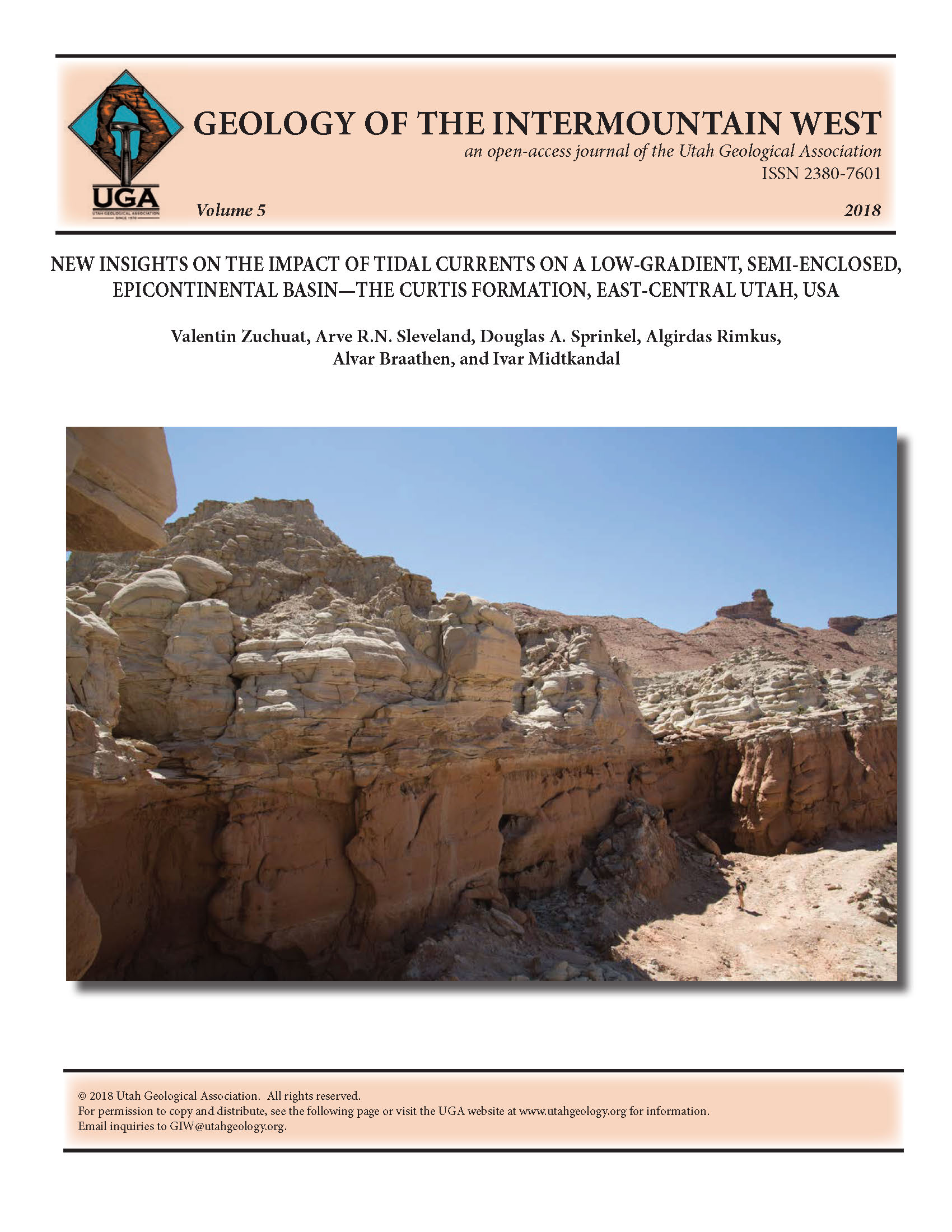New Insights on the Impact of Tidal Currents on a Low-gradient, Semi-enclosed, Epicontinental Basin—the Curtis Formation, East-central Utah, USA
Abstract
Based on a methodic sedimentological analysis, the Late Jurassic (Oxfordian) Curtis Formation unravels the intricate facies variability which occurs in a tide-dominated, fluvially starved, low-gradient, semi-enclosed epicontinental basin. This unit crops out in east-central Utah, between the eolian deposits of the underlying Middle Jurassic (Callovian) Entrada Sandstone, from which it is separated by the J-3 unconformity, and the conformable overlying supratidal Summerville Formation of Oxfordian age. A high-resolution sedimentary analysis of the succession led to the recognition of eight facies associations (FA) with six sub-facies associations. Based on the specific three-dimensional arrangement of these eight facies associations, it is proposed to separate the Curtis Formation into three sub-units: the lower, middle and upper Curtis. The J-3 unconformity defines the base of the lower Curtis, which consists of upper shoreface to beach deposits (FA 2), mud-dominated (FA 3a) and sand-dominated heterolithic subtidal flat (FA 3b), sand-rich sub- to supratidal flat (FA 4a) and correlative tidal channel infill (FA 4c). It is capped by the middle Curtis, which coincides with the sub- to intertidal channel-dune-flat complex of FA 5, and its lower boundary corresponds to a transgressive surface of regional extent, identified as the Major Transgressive Surface (MTS). This surface suggests a potential correlation between the middle and the upper Curtis and the neighboring Todilto Member of the Wanakah Formation or Todilto Formation. The upper Curtis consists of the heterolithic upper sub- to intertidal flat (FA 6) and coastal dry eolian dunes belonging to the Moab Member of the Curtis Formation (FA 7), and it conformably overlies the middle Curtis.

Copyright (c) 2018 Utah Geological Association

This work is licensed under a Creative Commons Attribution 4.0 International License.




